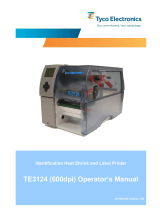
3
1 Introduction ............................................................................................................................................ 4
1.1 Instructions ...............................................................................................................................................4
1.2 Intended Use ............................................................................................................................................4
1.3 Safety Instructions ....................................................................................................................................5
1.4 Environment .............................................................................................................................................5
2 Installation .............................................................................................................................................. 6
2.1 Device Overview ...................................................................................................................................... 6
2.2 Unpacking and Setting-up the Printer ...................................................................................................... 7
2.3 Connecting the Device .............................................................................................................................7
2.3.1 Connecting to the Power Supply ........................................................................................................ 7
2.3.2 Connecting to a Computer or Computer Network .............................................................................. 7
2.4 Switching on the Device ...........................................................................................................................7
3 Touchscreen Display ............................................................................................................................. 8
3.1 Start Screen ............................................................................................................................................. 8
3.2 Navigation in the Menu ..........................................................................................................................10
4 Loading Material ................................................................................................................................... 11
4.1 Loading Label Rolls .................................................................................................................................11
4.1.1 Adjusting the Roll Retainer ................................................................................................................11
4.1.2 Loading the Label Roll ......................................................................................................................12
4.1.3 Inserting Labels into the Transport Module ...................................................................................... 12
4.2 Loading Fanfold Labels ..........................................................................................................................13
4.3 Loading Labels for Peel-off Mode .......................................................................................................... 14
4.4 Selecting and Positioning Label Sensors ...............................................................................................15
4.4.1 Gap Sensors.....................................................................................................................................15
4.4.2 ReexSensor ...................................................................................................................................15
4.5 Loading Transfer Ribbon ........................................................................................................................16
4.6 Setting the Feed Path of the Transfer Ribbon ........................................................................................17
5 Printing Operation ................................................................................................................................18
5.1 Synchronization of the Paper Feed ........................................................................................................18
5.2 Tear-off Mode ......................................................................................................................................... 18
5.3 Peel-off Mode .........................................................................................................................................18
5.4 Cutting Mode ..........................................................................................................................................18
6 Cleaning ................................................................................................................................................19
6.1 Cleaning Information ..............................................................................................................................19
6.2 Cleaning the Print Roller ........................................................................................................................ 19
6.3 Cleaning the Printhead ...........................................................................................................................19
6.4 Cleaning the Label Sensors ...................................................................................................................19
6.5 Cleaning the Cutter ................................................................................................................................ 20
7 Fault Correction ...................................................................................................................................21
7.1 Error Display ..........................................................................................................................................21
7.2 Error Messages and Fault Correction .................................................................................................... 21
7.3 Problem Solution ....................................................................................................................................23
8 Media .....................................................................................................................................................24
8.1 Media Dimensions ..................................................................................................................................24
8.2 Device Dimensions ................................................................................................................................25
8.3 ReexMarkDimensions ........................................................................................................................ 26
8.4 Cut-out Mark Dimensions .......................................................................................................................27
9 Licenses ................................................................................................................................................28
9.1 Reference to the EU Declaration of Conformity .....................................................................................28
9.2 FCC ........................................................................................................................................................28
10 Index ......................................................................................................................................................29
Table of Contents





















